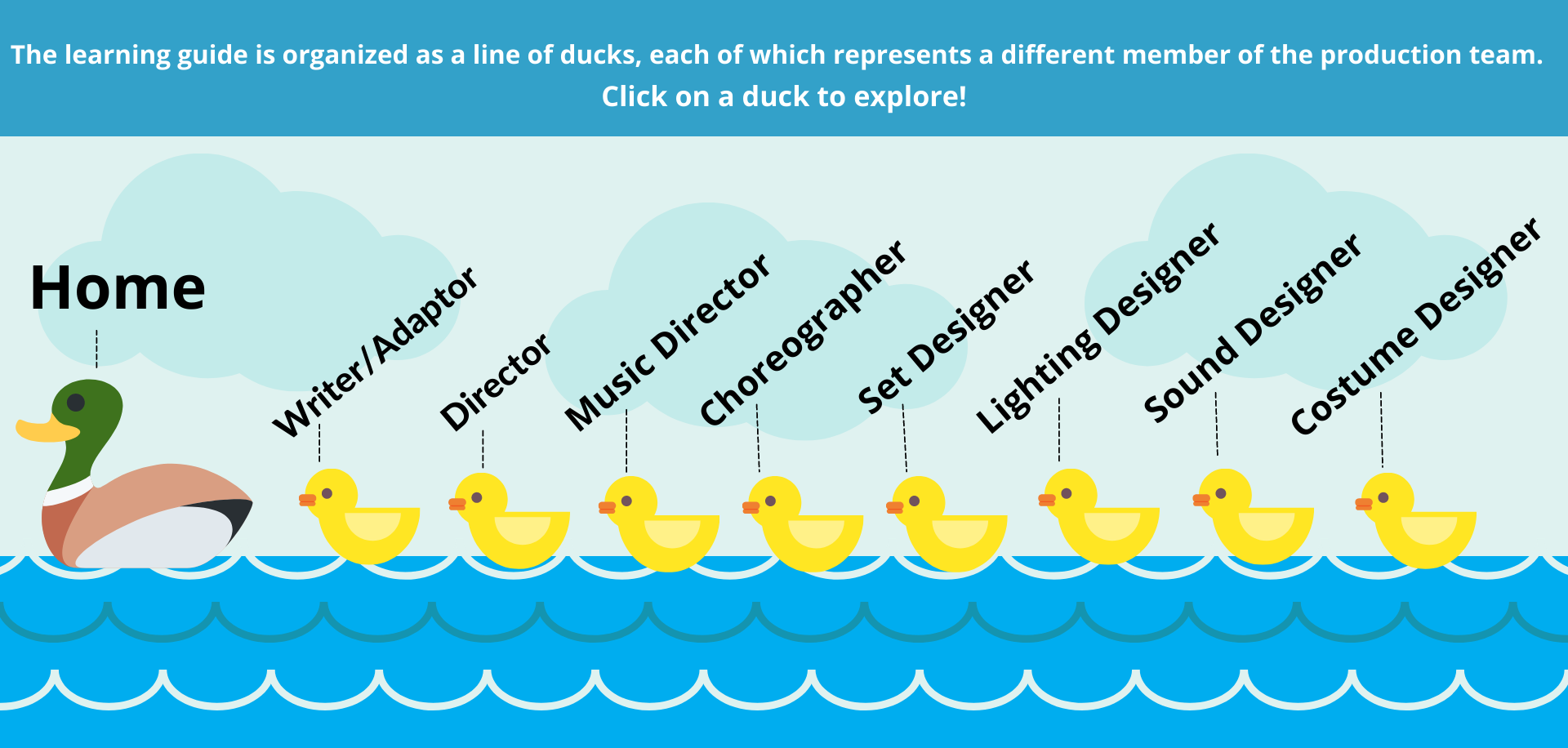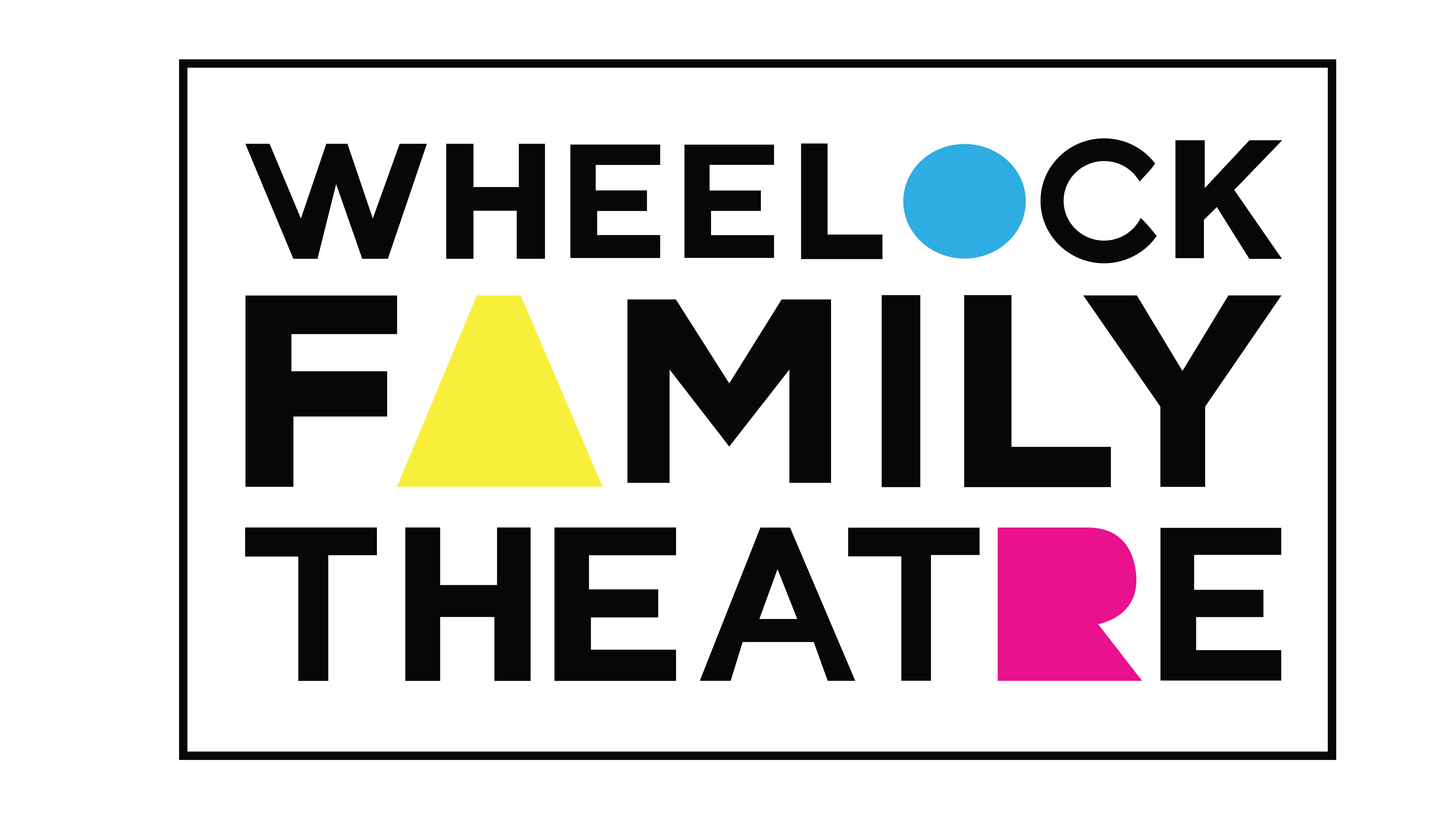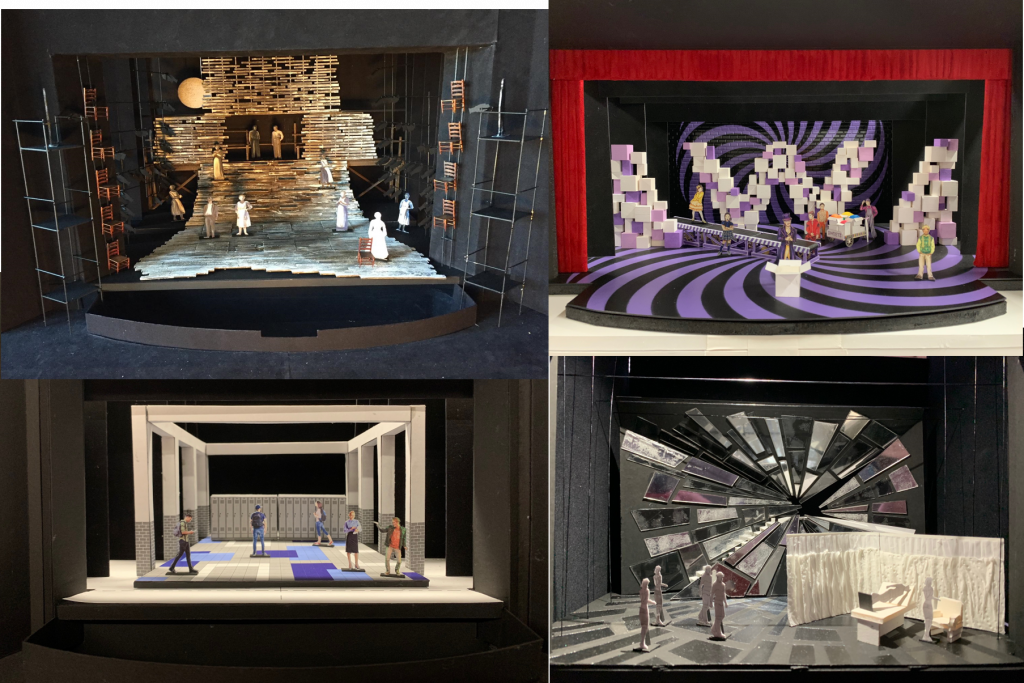
Activities are marked with the following age-range suggestions:
- EE — Early elementary (grades K-2)
- LE — Late elementary (grades 3-5)
- MS — Middle school (grades 6-8)
- HS — High school (grades 9+)
Contact Us
If you have any questions or would like to share how you and your class engaged with the VLG, send us an email at WFTEd@bu.edu.

Watch an interview with James F. Rotondo III
Watch a scene from the workshop production utilizing green screens.
Watch examples of perspective
Set designer James F. Rotondo III describes that one of the first steps of his process is asking as many ‘What If’ questions as possible. What if the entire set is purple? What if the set is a playground? What if the set is made entirely out of cardboard boxes? This activity asks students to consider set design through the lens of What Ifs.
Start with a designated story — either Make Way For Ducklings, or another story your class is reading or studying.
There are two ways to conduct this exercise:
- Give students a specific set of What Ifs to consider, or assign each student one What If. Each student (or pair or small group) begins to conceptualize the story using either the one or the multiple What Ifs they have been assigned by the teacher.
- Allow students to create their own What Ifs — perhaps 3-5 that they invent! Students can use the ones they invent or trade with other students.
Once students have their What Ifs, students select one or more to explore. As students begin to conceptualize how this What If would translate into a set design and impact the telling of the story, they can represent their thinking in one or both of the following ways:
- Find a visual way to represent your thinking — sketch a set, collage images together, gather inspiration in a slide show — anything that would help another person see what you are thinking. As you create, make sure you are able to explain why you make the choices you are making.
- Write about how you imagine this What If impacting the story. How would it impact the audience’s perception of the world? How would it impact the staging? How would it impact the message of the story?
In this activity, our younger students imagine and draw the world of the play, thinking like a set designer!
Read aloud a story of your choice, but do not show the pictures.
Select or ask students to select a scene or location from the story. Students draw what they picture the scenery looking like in that scene or location, using their imaginations to guide them.
Ask students to share their drawings and describe the scenery they pictured. Compare and contrast different students’ images of the same scenes or locations. Then, look at the illustrations from the book, and compare and contrast the students’ visions from the illustrator’s!
Many set designers make a tangible, small scale model of their set, to show the director and other team members their ideas before the set is built, and to see their ideas translated into physical form. These are examples of models for various productions built by set designer James F. Rotondo III:
In this activity, students use a shoebox and classroom craft materials to bring their ideas from the Form It activities into tangible form!
Younger students can build their models inspired by their drawings; older students can build their models inspired by their What Ifs. Alternately, students can start from scratch building a model for a new set design or for a new story.
Share models with a gallery walk around the classroom!
This activity asks students to think abstractly about their ideas for the world of a play, and to represent those ideas using found objects, or objects from the world around them.
Ask students to think about the world of a story, either Make Way For Ducklings, or another story your class is reading or studying. What colors come to mind? What themes come to mind? What key objects might be needed to tell the story? What is the overall feeling of the play?
Students should explore either the classroom or their room at home and gather a collection of items that answer the questions above in some way. How can objects from their own world represent the story?
Students curate a small collection of 5-10 items and arrange them in a way that is meaningful to them and their interpretation of the story.
Here is one suggestion for sharing found object collections: Break the students into small groups. Each student gets a turn to present their found objects using all or parts of the following protocol.
- Creator is silent. Observers share what they notice about the creator’s work.
- Creator is silent. Observers share what they wonder about the creator’s work.
- Observers are silent. Creator shares the ideas behind their work.
- Creator is silent. Observers share what they see now about the creator’s work.
- Both creator and observers can talk. Both creator and observers can ask and answer questions about the creator’s work.
- Both creator and observers talk. Observers can share kind words and/or helpful, specific feedback for the creator.
One of James’ favorite What Ifs is “What if the set was a playground?” In this activity, it is!
Head outside to a nearby playground structure. Using either pretend-play, a scripted scene, or improvisation, select a small group of students to act out a scene, either from Make Way For Ducklings or another story of your choice, using the playground as their set.
Encourage students to move around the playground during the scene. When might their character want to climb up, slide down, or swing across? How can movements on the playground communicate the character’s emotions or motivations in the scene?





